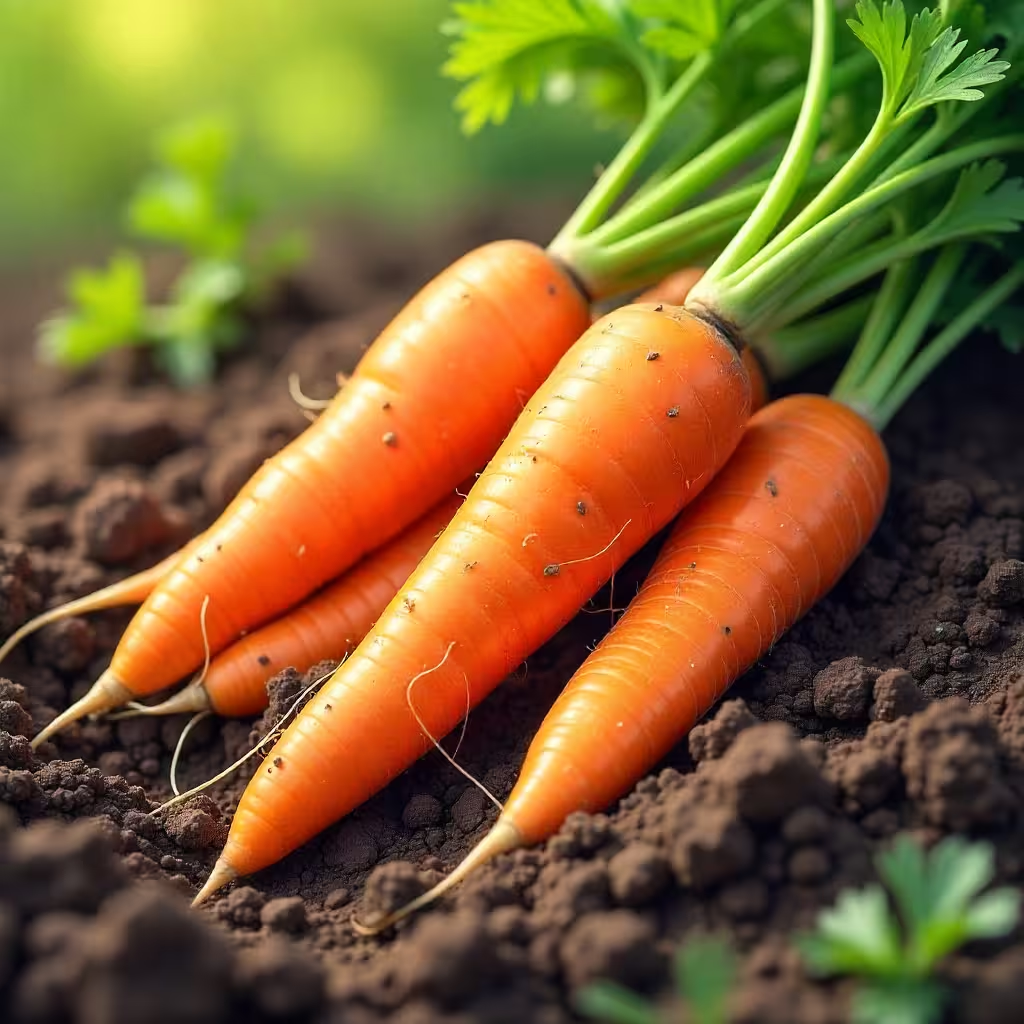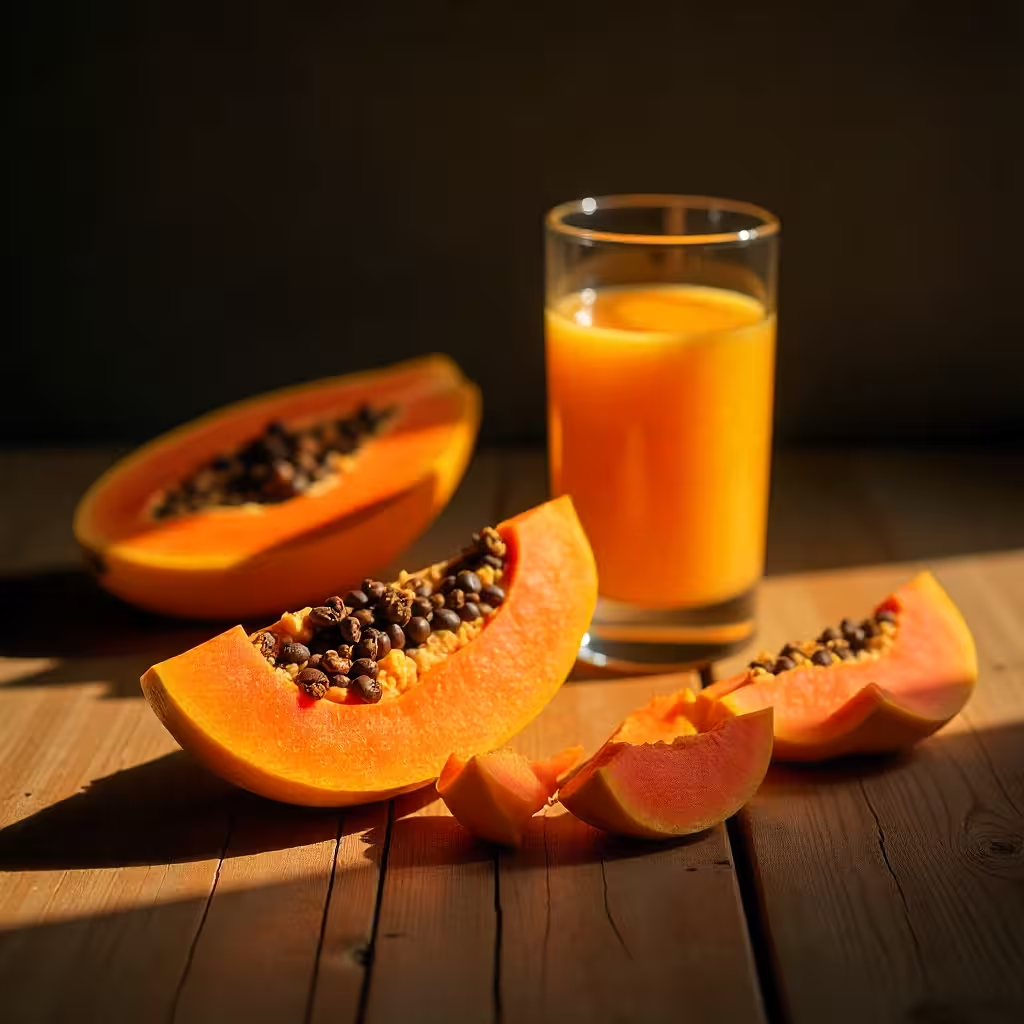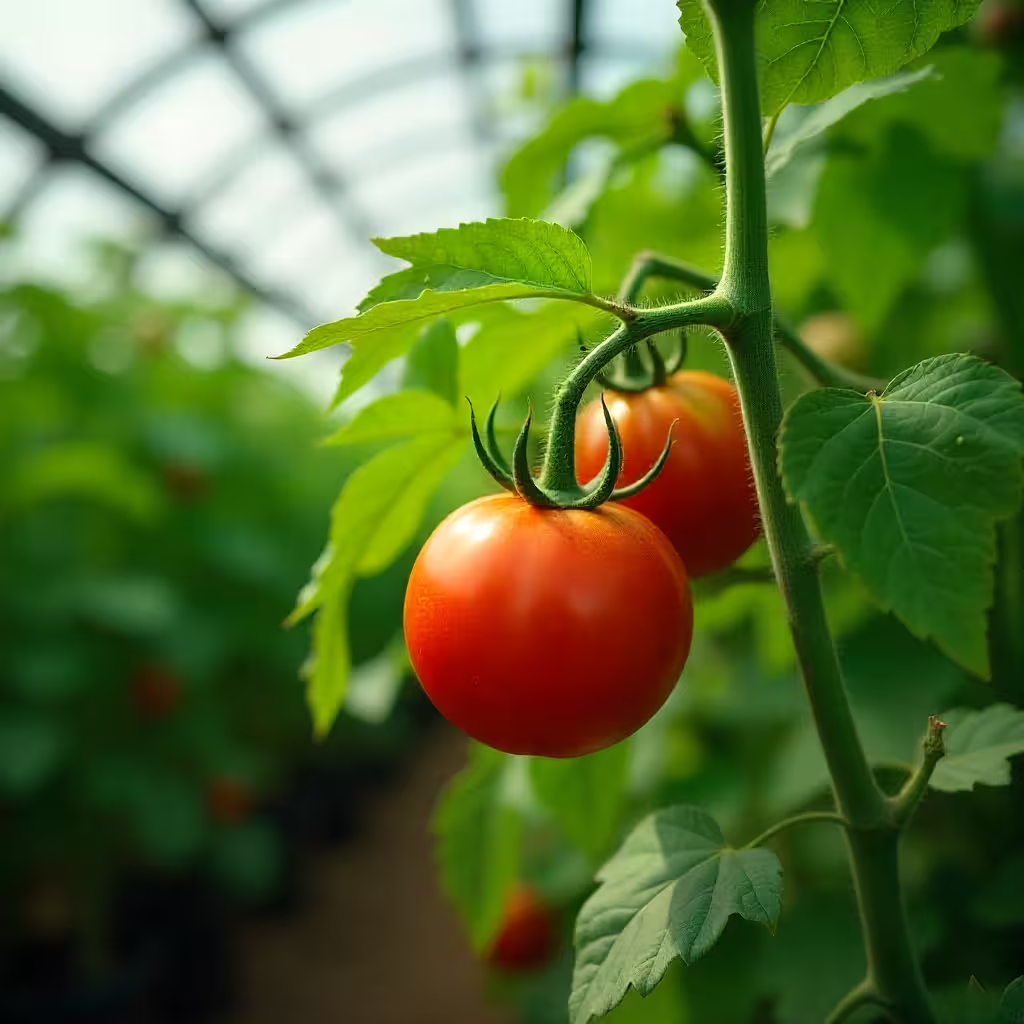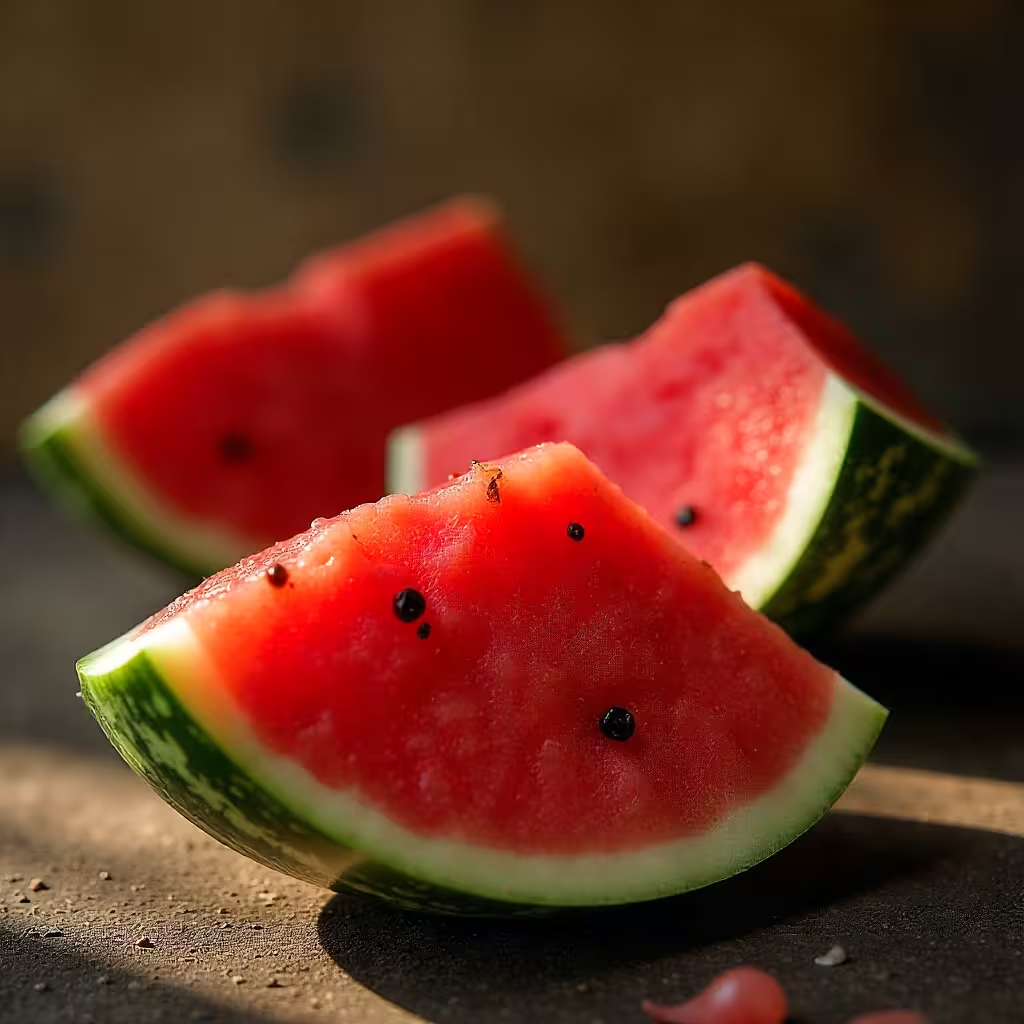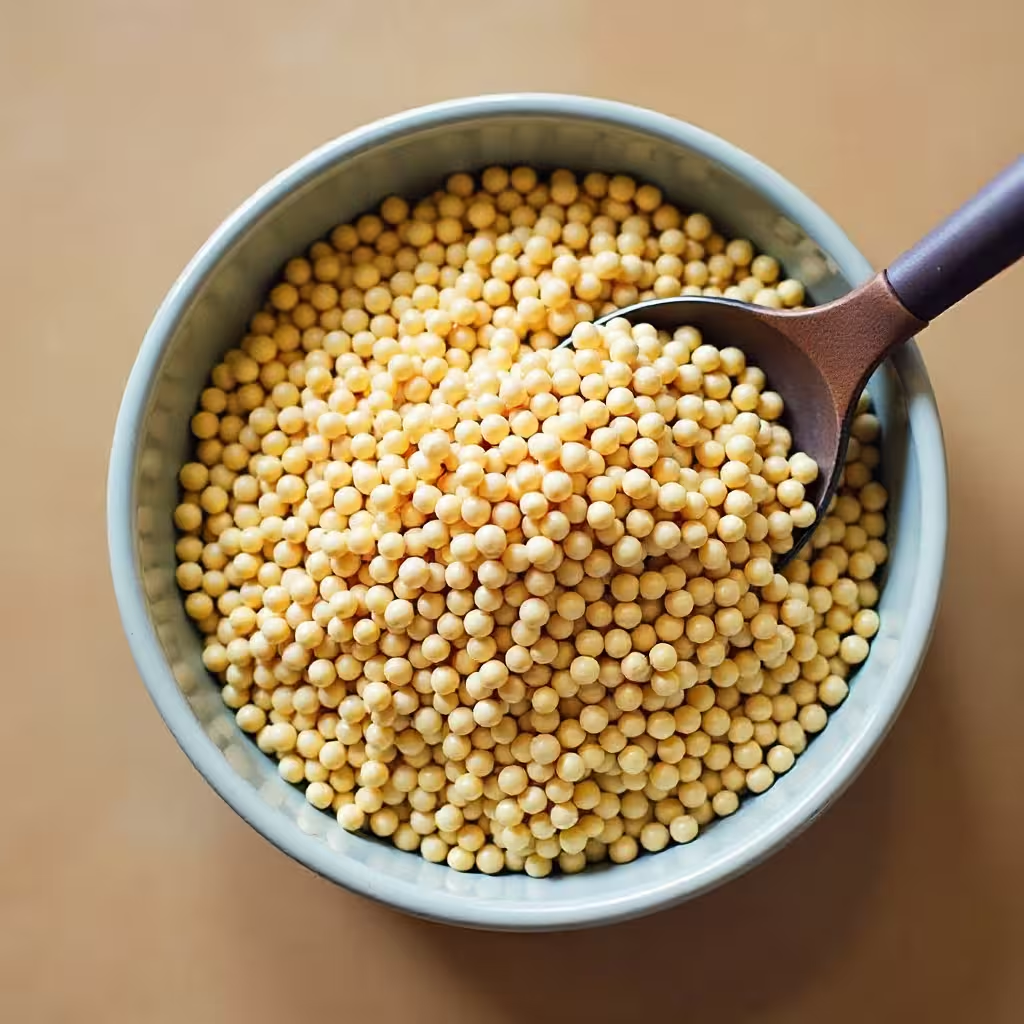Papaya's Exceptional Health Importance and Benefits
Papaya stands as one of the world's most nutritionally powerful and medicinally valuable tropical fruits, offering extraordinary health benefits that span digestive wellness, immune enhancement, cardiovascular protection, anti-inflammatory action, skin health, and disease prevention, making it an essential component of health-promoting diets across tropical and subtropical regions. The exceptional nutritional profile of papaya includes extraordinarily high levels of vitamin C (providing over 200% of daily requirements in one medium fruit), substantial vitamin A from beta-carotene and beta-cryptoxanthin (supporting vision, immune function, and skin health), vitamin E, folate, potassium, magnesium, and powerful antioxidants including lycopene and various carotenoids that protect against oxidative stress and chronic disease. The most distinctive and valuable component of papaya is papain, a proteolytic enzyme that breaks down proteins and provides remarkable digestive benefits, reducing bloating, gas, constipation, and indigestion while improving nutrient absorption and supporting overall gastrointestinal health; papain also possesses anti-inflammatory properties that reduce systemic inflammation contributing to arthritis, cardiovascular disease, and other chronic conditions. Cardiovascular benefits of papaya are substantial: the high vitamin C and lycopene content prevents oxidation of cholesterol particles that damage arterial walls, reduces LDL cholesterol levels, prevents atherosclerotic plaque formation, and decreases cardiovascular disease risk by up to 30% with regular consumption; the fiber content helps lower cholesterol absorption; and potassium regulates blood pressure by counteracting sodium effects and promoting healthy blood vessel function. Papaya demonstrates powerful anti-inflammatory effects throughout the body, with papain and chymopapain enzymes reducing inflammatory markers, alleviating arthritis pain and swelling, accelerating wound healing, and potentially reducing inflammation-driven diseases including heart disease, diabetes, and certain cancers. The immune-enhancing properties of papaya stem from exceptional vitamin C content that strengthens white blood cell function, enhances antibody production, reduces infection duration and severity, and provides antioxidant protection; vitamin A supports immune cell development and mucosal barrier integrity; and various phytonutrients activate immune pathways. Cancer prevention benefits emerge from papaya's rich antioxidant content, particularly lycopene which reduces prostate, breast, and digestive system cancer risks; fiber that promotes healthy colon function and reduces colorectal cancer risk; and various compounds that inhibit tumor growth and promote cancer cell death in laboratory studies. Digestive wellness extends beyond papain to include fiber that promotes regular bowel movements and feeds beneficial gut bacteria; compounds that may reduce H. pylori bacteria causing stomach ulcers; and gentle effects that soothe irritated digestive tracts. Skin health benefits arise from vitamin C essential for collagen synthesis, vitamin A that promotes skin cell renewal and repair, papain used topically to exfoliate dead skin and reduce acne, and antioxidants that protect against sun damage and premature aging. The green (unripe) papaya offers distinct benefits: higher papain concentration making it more effective for digestive issues and inflammation; use in traditional medicine for parasitic infections, menstrual regulation, and wound healing; and culinary versatility in salads, curries, and pickles throughout Southeast Asia and Africa. For maximum health benefits, ripe papaya should be consumed fresh when orange and soft, eaten on empty stomach for optimal digestive enzyme activity, combined with a small amount of fat to enhance absorption of fat-soluble vitamins and carotenoids; seeds, often discarded, contain powerful compounds with antiparasitic, antibacterial, and liver-protective properties and can be consumed in small quantities (1-2 teaspoons daily) either fresh, dried, or ground. The remarkable aspect of papaya is its combination of exceptional nutritional density, powerful medicinal enzymes found in few other foods, ease of cultivation in tropical climates producing fruit year-round with minimal inputs, affordability and accessibility in regions where it grows, versatility in both ripe and unripe forms, and proven effectiveness for multiple health conditions from digestive disorders to cardiovascular disease prevention, positioning it as one of nature's most complete and accessible medicinal foods capable of dramatically improving health outcomes for populations with access to fresh papaya.
Featured Content
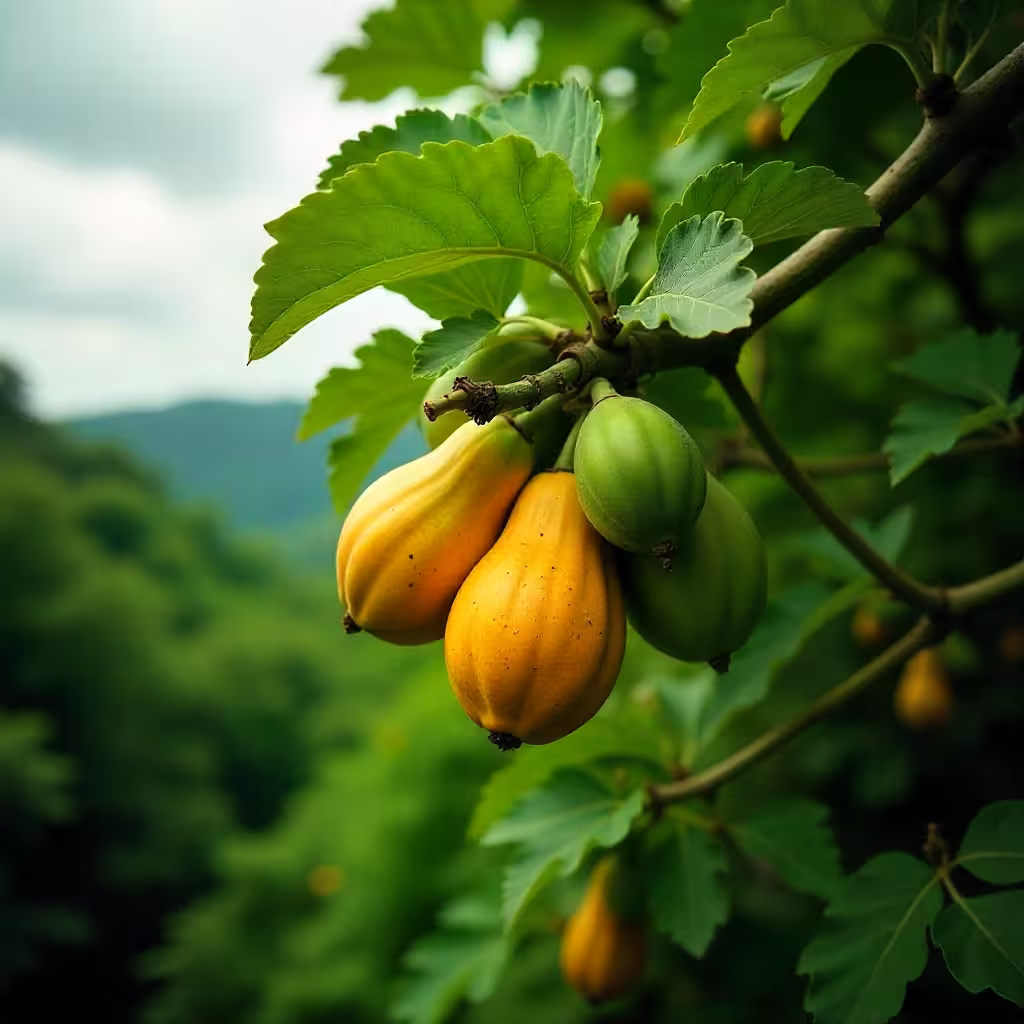
Papaya has achieved global recognition as a superfruit, with cultivation spanning tropical and subtropical regions across Asia, Latin America, Africa, and Oceania, and consumption patterns reflecting both traditional medicinal uses and modern scientific validation of health benefits. Global papaya production exceeds 13 million metric tons annually, with India, Brazil, Mexico, Indonesia, and Nigeria leading production, while consumption has expanded into temperate regions through improved transportation and growing awareness of nutritional benefits. International health organizations increasingly recognize papaya's value for addressing malnutrition, particularly vitamin A deficiency affecting millions of children globally and contributing to blindness, impaired immunity, and increased mortality from infectious diseases; a single serving of papaya provides multiple days' worth of vitamin A, making it a cost-effective intervention in regions where the fruit grows abundantly. The World Health Organization's emphasis on increasing fruit and vegetable consumption for chronic disease prevention positions papaya as an ideal target fruit given its exceptional nutrient density, digestive benefits that improve overall nutritional status, and cardiovascular protective effects. Southeast Asian countries including Thailand, Philippines, Vietnam, and Indonesia have long traditions of using papaya medicinally—consuming green papaya for digestive issues, using papaya leaves to treat dengue fever by increasing platelet counts, applying papain for wound healing, and incorporating both ripe and unripe papaya into daily diets for general wellness. Latin American nations where papaya originated have integrated it deeply into culinary and medicinal traditions, using it for digestive complaints, inflammatory conditions, and skin health, while modern research from Brazilian and Mexican institutions validates many traditional uses. The global nutraceutical industry has developed papaya enzyme supplements, papain tablets for digestive support, and papaya extract products, though whole fruit consumption remains superior for obtaining the full spectrum of benefits including fiber, vitamins, and synergistic compounds. International research continues documenting papaya's therapeutic potential: studies demonstrate effectiveness in improving digestion in patients with irritable bowel syndrome and functional dyspepsia; reducing inflammatory markers in arthritis patients; supporting immune function during illness; and providing cardiovascular protection through multiple mechanisms. The global expansion of papaya consumption faces challenges including limited cold chain infrastructure in producing regions leading to post-harvest losses, short shelf life of ripe fruit restricting export to distant markets, and competition from other tropical fruits, yet increasing recognition of its health benefits drives growing demand particularly in health-conscious populations seeking functional foods that provide both nutrition and therapeutic effects for managing modern chronic diseases.
Additional Insights

Burundi possesses ideal tropical climate conditions for papaya cultivation across most of its territory, with existing production primarily concentrated in low-altitude regions, though consumption and health promotion remain underdeveloped despite the fruit's exceptional potential for addressing malnutrition and chronic diseases affecting Burundian populations. Papaya grows successfully in Burundi's lake regions, including areas around Lake Tanganyika and the Imbo plain where warm temperatures and adequate rainfall support year-round fruiting, while mid-altitude zones can also produce papaya with proper variety selection and management. The importance of papaya for Burundi is compelling: vitamin A deficiency affects approximately 35-40% of Burundian children under five, contributing to impaired growth, weakened immunity, and preventable vision problems; digestive disorders are common due to parasitic infections, poor sanitation, and limited dietary diversity; and cardiovascular diseases are rising as urbanization increases and dietary patterns shift. Burundian farmers can expand papaya cultivation through accessible methods: planting improved varieties suited to local conditions in home gardens, utilizing papaya's rapid growth and fruiting (producing within 6-12 months of planting); establishing small commercial orchards on portions of family land for income generation; and integrating papaya trees into existing agricultural systems as they require minimal space and inputs while producing abundant fruit. Burundian preparation and consumption patterns traditionally include eating ripe papaya fresh as a snack or dessert, though systematic promotion of daily consumption for health benefits remains limited; green papaya can be incorporated into vegetable preparations, grated into salads similar to West African traditions, or cooked in stews, expanding usage beyond ripe fruit. Health centers throughout Burundi should promote papaya consumption specifically for children under five to combat vitamin A deficiency, providing mothers with education about daily papaya portions and preparation methods during growth monitoring visits. Community health workers visiting Burundian households can distribute papaya seeds and demonstrate cultivation techniques while explaining health benefits including improved digestion, stronger immunity, and better nutrition for children. Urban markets in Bujumbura and provincial centers should feature papaya prominently with educational materials in Kirundi explaining specific health benefits and encouraging regular family consumption. The challenge in Burundi involves overcoming limited awareness of papaya's exceptional nutritional value beyond basic fruit consumption, addressing post-harvest handling to reduce losses and extend availability, and ensuring affordable access for poor households who would benefit most from its nutritional density. Burundian agricultural extension services can promote papaya as a nutrition-sensitive crop that simultaneously provides family health benefits and potential cash income, particularly for women who often manage home gardens and could benefit economically from small-scale papaya sales. Given Burundi's high population density, limited agricultural land, and severe malnutrition challenges particularly affecting children and pregnant women, papaya represents an ideal crop requiring minimal space while delivering exceptional nutritional returns, making its systematic promotion through health and agricultural sectors a high-priority intervention for improving Burundian health outcomes.
In-depth Analysis
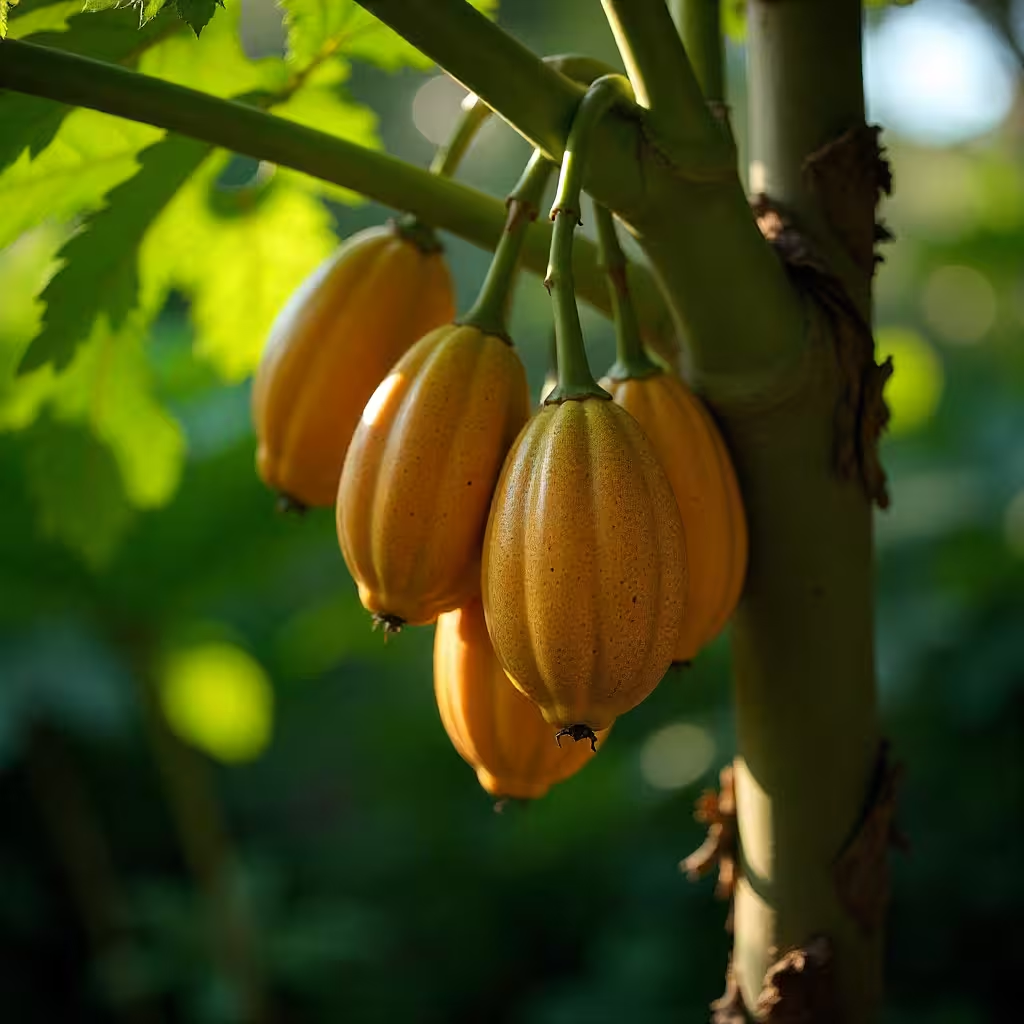
Rwanda's climate varies considerably across its hilly terrain, with papaya cultivation successful in lower-altitude, warmer regions including parts of Eastern Province, areas around Lake Kivu, and valleys throughout the country, though production remains limited compared to other fruits and systematic health promotion is underdeveloped. The importance of expanding papaya cultivation and consumption in Rwanda is significant: vitamin A deficiency affects approximately 38% of Rwandan children under five; digestive complaints are common; cardiovascular diseases and diabetes are rising rapidly particularly in urban areas; and Rwanda's national nutrition strategy emphasizes increasing fruit and vegetable consumption to address both undernutrition and emerging chronic diseases. Rwandan farmers in suitable climate zones can cultivate papaya using improved varieties that tolerate cooler temperatures and resist diseases, planting in warm microclimates such as sun-exposed hillsides, valley bottoms, and around homesteads where structures provide warmth; papaya's rapid growth and early fruiting make it attractive for smallholder farmers seeking quick returns from limited land. The Rwanda Agriculture Board can support papaya expansion by developing and distributing climate-adapted varieties, providing technical guidance through extension services, and promoting papaya in One Cup of Milk per Child (Shisha Muryango) and other nutrition programs as a vitamin A-rich complement to dairy products. Urban and peri-urban areas of Kigali, Huye, Musanze, and other towns where warmer microclimates exist should prioritize papaya cultivation in home gardens and institutional settings including schools, health centers, and government compounds, demonstrating cultivation while ensuring local availability. Rwandan preparation methods should build on existing fruit consumption patterns while introducing green papaya applications: promoting fresh ripe papaya consumption, particularly for children and pregnant women; demonstrating green papaya salad preparations inspired by Southeast Asian and West African traditions; explaining how papaya aids digestion and should be consumed before meals for optimal enzyme activity. Health facilities throughout Rwanda should incorporate papaya recommendations into dietary counseling for patients with digestive complaints, hypertension, high cholesterol, and diabetes, prescribing specific daily amounts and preparation methods as evidence-based food medicine. Community health workers conducting household visits can assess papaya cultivation potential, distribute seeds or seedlings to appropriate households, and educate families about health benefits particularly for children's vitamin A status and adults' cardiovascular health. Rwanda's community health clubs provide platforms for papaya cultivation and preparation demonstrations, with members learning together and supporting each other in establishing home papaya production. Schools in suitable climate zones should cultivate papaya in school gardens, incorporating fruit into feeding programs while teaching students about nutritional benefits, creating knowledge and habits that extend to family practices. The challenge in Rwanda involves climate limitations in high-altitude areas where much of the population lives, requiring focus on suitable zones and protected cultivation in cooler areas, along with post-harvest handling education to minimize waste and maximize consumption of produced fruit. Rwanda's strong health system infrastructure, effective community health worker network, demonstrated capacity for agricultural innovation, and commitment to nutrition improvement position the country well for systematic papaya promotion that could significantly impact child vitamin A status and adult chronic disease prevention in papaya-suitable regions within a relatively short timeframe.
Key Highlights
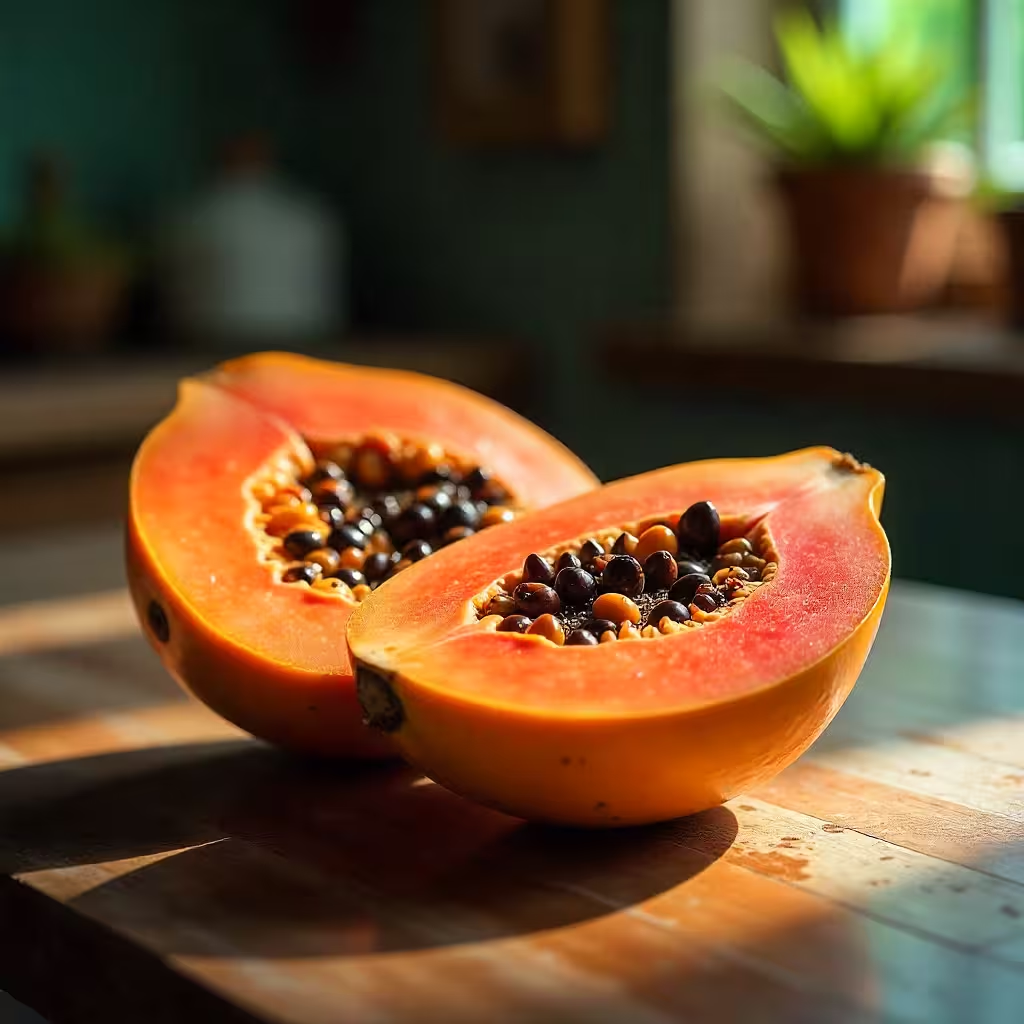
West Africa has long cultivated and consumed papaya with deep integration into traditional medicine systems, though modern health promotion linking traditional knowledge with scientific evidence remains inconsistent across the region's diverse countries. Papaya grows prolifically throughout West Africa's tropical and subtropical zones, with Nigeria, Ghana, Benin, Côte d'Ivoire, Senegal, and Guinea among major producing countries where the fruit thrives in lowland areas, coastal regions, and savanna zones with adequate rainfall or irrigation. Traditional West African medicine extensively employs papaya: consuming ripe fruit for digestive wellness and as a general health tonic; using green papaya and leaves for treating malaria symptoms, though scientific evidence for antimalarial effects is limited; applying papaya leaf extracts to wounds for faster healing leveraging papain's proteolytic properties; consuming papaya seeds for deworming and treating intestinal parasites, a use validated by research showing antiparasitic compounds; and using unripe papaya traditionally for menstrual regulation, though this requires caution as compounds in unripe papaya may stimulate uterine contractions. West African culinary traditions incorporate papaya diversely: eating ripe fruit fresh, often for breakfast or as snacks throughout the day; preparing green papaya in vegetable stews and soups, grating it into salads, or pickling it; combining papaya with other fruits in fresh juice blends popular in urban areas; and increasingly using papaya in smoothies and modern beverage preparations. The importance of papaya for West African health is profound: vitamin A deficiency remains prevalent affecting millions of children across the region; digestive disorders including parasitic infections and functional gastrointestinal complaints are common; cardiovascular diseases, diabetes, and hypertension are rising dramatically with urbanization; and malnutrition persists alongside growing obesity, creating a double burden that papaya's nutritional density can help address. West African countries can optimize papaya's health impact through systematic interventions: national nutrition programs should explicitly promote papaya for vitamin A delivery to vulnerable populations including children under five, pregnant women, and lactating mothers; health facilities should recommend papaya for patients with digestive complaints, leveraging both traditional knowledge and scientific evidence about papain's benefits; agricultural policies should support smallholder papaya cultivation through improved varieties, technical assistance, and market development; and public health campaigns using radio, community health workers, and traditional leaders should educate populations about specific health benefits beyond general fruit consumption. Urban markets throughout West African cities from Lagos to Accra, Dakar to Abidjan should prominently feature papaya with educational signage in local languages explaining its vitamin A content for children's health, digestive benefits, and cardiovascular protection. West African research institutions can document traditional papaya uses, validate them through scientific study, and develop culturally appropriate health promotion materials that bridge traditional knowledge with modern evidence. The challenge involves addressing post-harvest losses that waste significant production, improving cold chain infrastructure for urban distribution, ensuring affordability for poor populations who would benefit most, and overcoming perceptions of papaya as merely a fruit rather than powerful medicine for preventing and managing diseases that burden West African health systems and families.
Final Thoughts

Urban areas across Africa and globally present both challenges and unique opportunities for papaya consumption and health promotion, with towns serving as centers of changing dietary patterns, rising chronic diseases, and concentrated populations accessible through targeted interventions. The importance of promoting papaya in urban settings is critical: towns experience the highest rates of cardiovascular disease, diabetes, hypertension, and obesity as residents adopt processed food-heavy diets while reducing traditional fruit and vegetable consumption; urban children still suffer vitamin A deficiency despite generally better food access compared to rural areas; digestive complaints related to stress, poor dietary choices, and sedentary lifestyles are common; and urban populations typically have better health literacy and purchasing power to invest in health-promoting foods when properly educated. Urban papaya access differs markedly from rural areas: fresh papaya is available in markets and increasingly in supermarkets, though prices may be higher than in producing regions; processed papaya products including juices, dried fruit, and supplements are more readily available; and cold chain infrastructure enables longer storage and distribution of ripe fruit. Towns can promote papaya consumption through multiple channels: urban health centers and hospitals should systematically recommend papaya for patients with digestive issues, cardiovascular risk factors, and diabetes, providing specific preparation instructions and connecting prescriptions to readily available market sources; supermarkets and formal markets should feature papaya prominently with point-of-sale materials explaining health benefits, recipe suggestions, and selection tips for identifying ripe fruit; urban schools should incorporate fresh papaya into feeding programs while teaching students about nutritional benefits, creating lifelong consumption habits; workplace wellness programs in urban businesses and government offices can provide papaya during breaks, sponsor health talks about its benefits, and encourage regular consumption for stress management and digestive health. Urban community health workers operating in informal settlements where poverty and malnutrition persist should prioritize papaya education during household visits, connecting families to affordable market sources and explaining how to maximize limited food budgets by choosing nutrient-dense options like papaya. Urban radio stations, social media campaigns, and community outreach programs can feature papaya in health promotion messaging, using testimonials from local health professionals, celebrities, or satisfied consumers to increase appeal and normalize daily consumption. Towns can support peri-urban papaya cultivation in home gardens and community gardens, improving food security while providing fresh, affordable fruit to urban and near-urban populations, reducing transportation costs and post-harvest losses. Urban restaurants and food vendors can incorporate papaya into menu offerings—fresh papaya plates, papaya smoothies, green papaya salads—making healthy choices convenient for busy urban residents eating outside homes. The challenge in urban areas involves competing with highly marketed processed foods, overcoming perceptions of papaya as special occasion food rather than daily staple, and ensuring affordability for poor urban populations living in informal settlements. Urban health departments should establish papaya promotion as a priority intervention for addressing rising chronic disease burden, allocating resources for education campaigns, healthcare provider training, and potentially subsidized distribution to vulnerable populations including pregnant women, young children, and individuals with diagnosed chronic conditions. The concentration of population, infrastructure, health facilities, media access, and formal markets in urban areas enables efficient, cost-effective papaya promotion interventions that can achieve rapid behavior change and measurable health improvements including reduced cardiovascular events, better glycemic control in diabetics, improved digestive health reducing healthcare utilization, and enhanced vitamin A status in children, making urban papaya promotion a high-return investment for town and city health systems seeking to address modern disease burdens with accessible, evidence-based dietary interventions.



